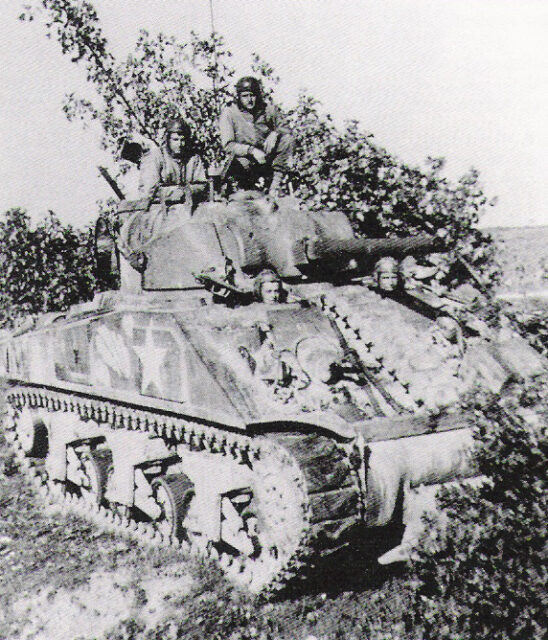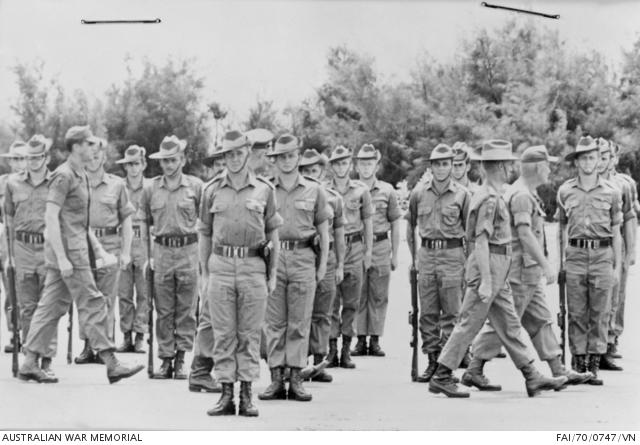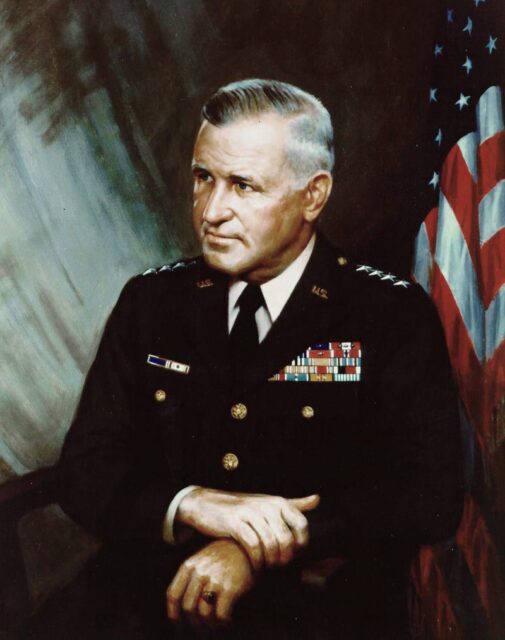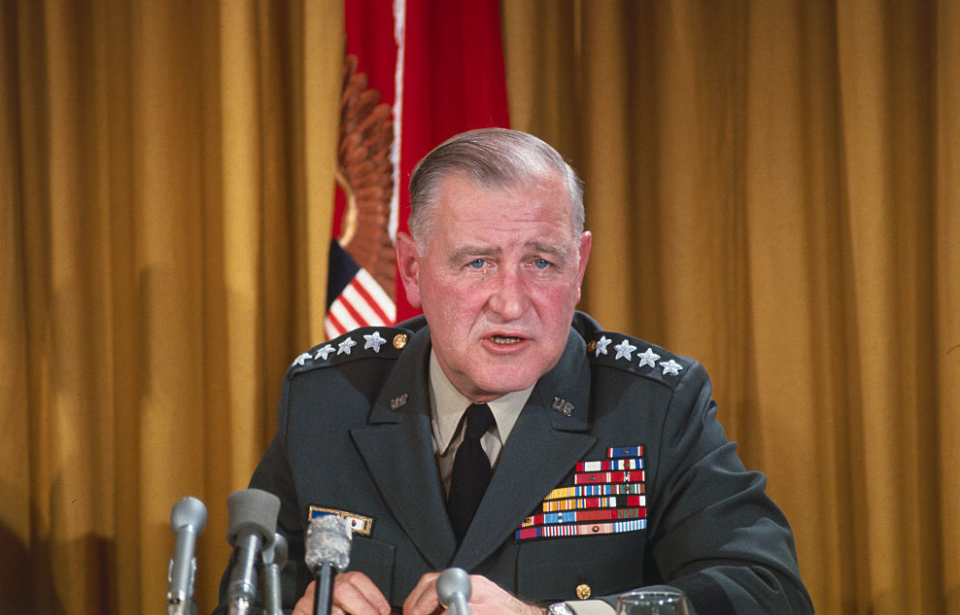Creighton Abrams’ service with the US Army’s armored divisions

Born on September 15, 1914, in Springfield, Massachusetts, Gen. Creighton Williams Abrams Jr. began his military journey at the US Military Academy West Point, graduating in 1936. He commenced his service with the 1st Cavalry Division, quickly ascending the ranks to first lieutenant and, subsequently, temporary captain.
During this time, the US Army was in the process of establishing its inaugural armored divisions, and Abrams played a pioneering role. In 1940, he voluntarily joined the 1st Armored Division, assuming the role of a tank company commander.
As the United States entered World War II, Abrams continued to distinguish himself, serving with the 4th Armored Division as a regimental adjutant and, later, as a battalion commander. His leadership led to his appointment as the regiment executive officer of the 37th Armor Regiment, which was later redesignated the 37th Tank Battalion, a unit he would command.
Battle of the Bulge

During the Battle of the Bulge, the last major German offensive on the Western Front, Creighton Abrams commanded the 37th Tank Battalion – specifically, Combat Command B.
The 37th frequently served as the lead battalion for George Patton‘s Third US Army. Abrams, at the helm of his tank Thunderbolt, played a pivotal role in breaking through German entrenchments around Bastogne, aiming to relieve the besieged 101st Airborne Division. Beyond his leadership skills, Abrams demonstrated proficiency in tank strategy. Despite the Germans having technically superior weapons and armor, he capitalized on the maneuverability of smaller American tanks.
As a key figure in the Third US Army, his boldness and courage garnered recognition from Patton, who acclaimed him as a peer, stating, “I’m supposed to be the best tank commander in the Army, but I have one peer – Abe Abrams. He’s the World Champion.”
Creighton Abrams’ service in Korea

By the end of World War II, Creighton Abrams had ascended to the rank of lieutenant colonel, briefly holding the position of temporary colonel before his demobilization.
Despite the war’s conclusion, Abrams continued his military career by commanding the 63rd Tank Battalion, 1st Infantry Division in Europe from 1949-51. He then led the 2nd Armored Cavalry Regiment from 1951-52. In 1953, he successfully completed studies at the US Army War College before embarking on overseas service in Korea.
While he joined the conflict in its later stages, Abrams served as the chief of staff for I, X and IX Corps in South Korea for about a year. Upon returning to the United States, he assumed command of various armored divisions and received several promotions. After leading V Corps in Europe in 1964, he earned a promotion to general and was appointed as the vice chief of staff of the US Army.
Commander of Military Assistance Command, Vietnam (MACV)

Three years later, Creighton Abrams assumed the role of deputy to Gen. William Westmoreland, who led the Military Assistance Command, Vietnam (MACV). On June 10, 1968, he succeeded Westmoreland, though opinions diverged regarding his approach. Some asserted Abrams prioritized winning the hearts and minds of the Vietnamese more than Westmoreland did, while others argued that he made no substantial changes to the American strategy abroad.
The latter perspective appears more plausible, given the Vietnam War persisted with escalating intensity, marked by numerous large-scale offensives led by US troops against the North Vietnamese Army (NVA), such as the Battle of Hamburger Hill.
Abrams also bore responsibility for executing the overseas policies mandated by politicians. With President Richard Nixon‘s election, this entailed reducing the number of US troops deployed in Vietnam.
Chief of Staff of the US Army

It’s believed Creighton Abrams played a major role in America’s involvement in Cambodia during the Vietnam War, as Richard Nixon heavily trusted his advice. In regard to American intervention, the president is recorded as saying, “If Abrams strongly recommends it we will do it.”
However, he soon fell out of favor with Nixon, in part because of the public backlash over the Mỹ Lai massacre, and for his actions during Operation Lam Son 719, in Laos.
Nixon eventually brought Abrams home, and appointed him chief of staff of the US Army in 1972. While he waited to be formally sworn in, he was tasked with transitioning the American forces overseas to volunteers. His other major accomplishment as chief of staff was forming the first Ranger battalion in January 1974, which was activated that July.
End of Creighton Abrams’ military career

Creighton Abrams served as chief of staff of the US Army until his death on September 4, 1974. He’d always been a heavy smoker, and it eventually caught up with him. He was only 59-years-old, and passed away from complications during a surgery intended to remove a cancerous lung. He was buried at Arlington National Cemetery.
In 1980, the US Army honored the general by naming the M1 Abrams after him.
Abrams was highly praised throughout his career by superiors and subordinates alike, despite occasionally being a controversial figure. Sen. John. C. Stennis (D-MS) expressed many who liked him because it never felt like he was sitting in an ivory tower, but had “mud on his boots.” Soldiers also felt like he was one of them because, despite his rank, he enjoyed being around them.
More from us: Pardo’s Push Saved the Lives of Two Men, But Wasn’t Recognized for Decades
A well-respected general, Abrams was decorated 41 times throughout his service. Among his awards were the Distinguished Service Cross with bronze oak leaf cluster, the Legion of Merit with bronze oak leaf cluster, the Silver Star with bronze oak leaf cluster and the Army Distinguished Service Medal with four bronze oak leaf clusters.
